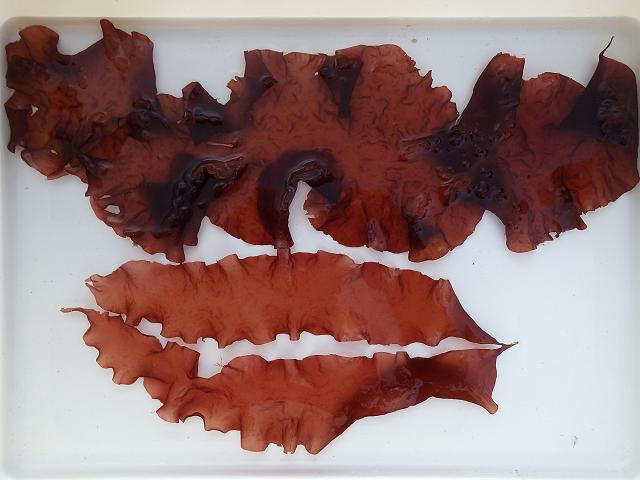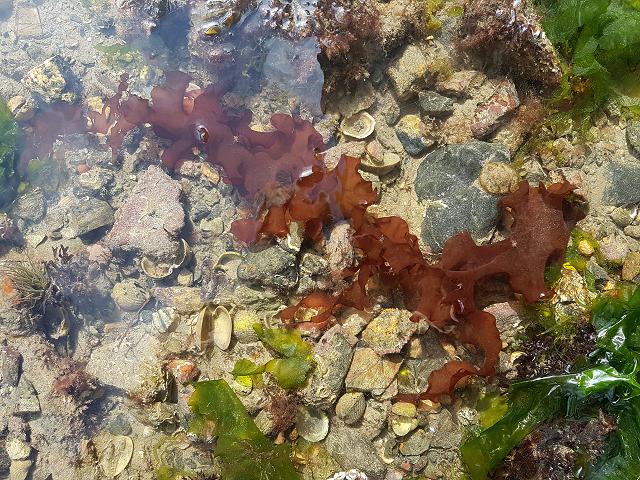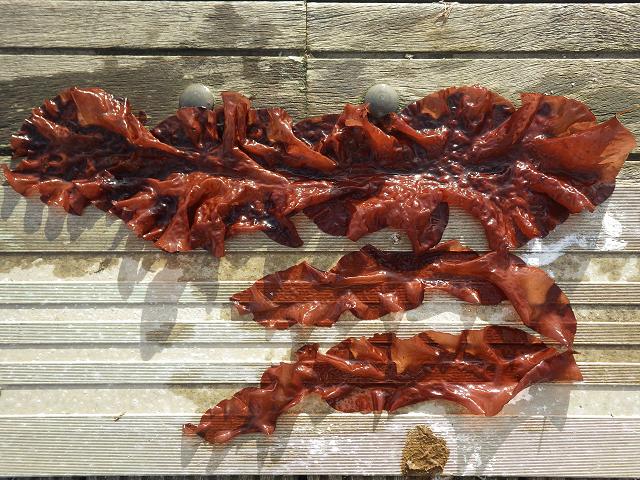Grateloupia turuturu Yamada

Also known as Devil's Tongue Weed.
Previously reported from the NE Atlantic as Grateloupia doryophora (Montagne) Howe
Description: Fronds 1-6 from a small disc, broadly lanceolate, light to darkish reddish-brown, drying to a more purplish colour; generally undivided with undulating margins; to 600 mm ( on occasion to 1 m), and 20 to 200 mm broad, mucilagnous, sliperly and limp. Occasionally producing marginal proliferations, particularly when damaged; surfaced becoming irrelular and tortupus when older. Reproductive cystocarps apparen as small blackish dots.
Habitat: Harbours and inlets, particularly in sheltered habitats where it is often found growing on small stones in muddy situations. Often on marinas and pontoons. Occasionally in the subtidal to 7 m, but essentially a lower intertidal and shallow subtidal species.
Distribution: South and SW Britain and NE Ireland (marina at Carrickfergus, Co. Antrim; October 2017), and spreading. Introduced around 1969 to England. NW Atlantic France and Spain, Portugal south to the Canary Islands and the west coast of Africa. Also introduced into Rhode Island and California, USA. In Asia known from Russia, Japan, Korea and China.
Similar species: Cryptonemia hibernica, also an introduced species from the Pacific, is very rare in the subtidal of Co. Cork in Ireland and Plymouth, England, is less mucilaginous, thinner, and has a distincly obovate outline.


Photographs: Cornwall © David Fenwick, Snr.





